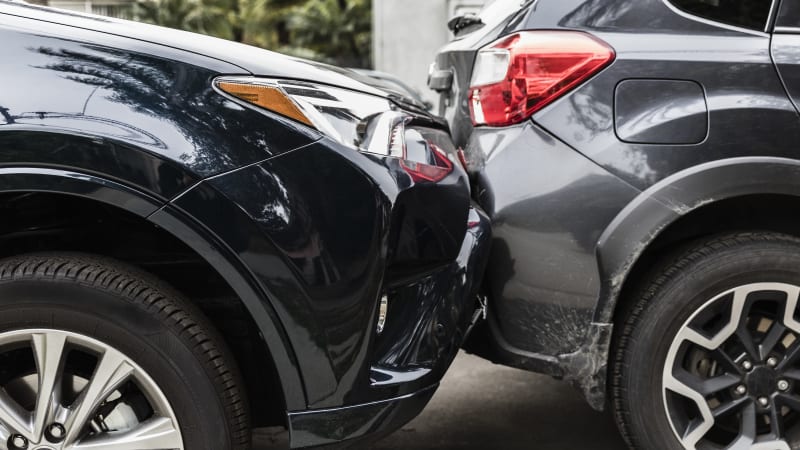A new form of sticker shock has hit American car buyers like Darrin Davis.
In January, when the 56-year-old Dallas real estate agent renewed insurance on the pearl white 2024 Cadillac XT4 he bought just a few months earlier, the rate nearly doubled.
“It takes the fun out of owning a new car when you’re paying that much money,” Davis said, adding that if he had known such a huge increase was coming, he might have gone for a cheaper model. But then it was too late.
In one of the cruel twists of the inflation-weary US economy, car prices are falling after a record spike during the COVID-19 pandemic. But at least some of those gains for consumers are being eaten up by rising auto insurance rates, which for some models now account for more than a quarter of the total cost of owning a vehicle.
Car prices fell as the pandemic’s supply chain snarls – particularly shortages of vital computer chips – unraveled and carmakers increased their stockpiles. Meanwhile, factors including the rising costs of repairing increasingly complex vehicles and more storm damage amid climate change are driving up insurance rates.
And car buyers aren’t the only ones struggling against insurance inflation. For Federal Reserve policymakers working to reduce inflation in general, this is an example of the unwelcome surprises that have conspired to slow their progress.
Hurt accessibility
The consumer price index rose 3.5 percent last month from a year earlier, according to the Labor Department. But auto insurance costs rose 22.2% over the same period, the biggest increase since 1970.
Meanwhile, car prices continued to decline. New vehicle prices fell 0.1 percent from a year earlier, while used car prices fell 2.2 percent. Car dealers offer more incentives to buyers, which helps reduce initial costs. The extent to which insurance rates influence purchasing decisions is unclear, but there are signs that it has become a bigger factor, especially for consumers on tight budgets.
“We’re hearing from a number of buyers that they’re turning away from buying a car — or returning one — because they can afford the car but not the insurance,” said Sean Tucker, senior editor at Kelley Blue Book, an auto appraisal and research company in Irvine, California.
Tucker said Kelley Blue Book recently added insurance guidelines to its list of buying tips, urging buyers to get an insurance quote before putting money down.
Auto insurance rates vary widely across the country and are affected by everything from what local collision repair shops charge to potential damage from tropical storms and wildfires. According to insurance shopping site Insurify, the average price in the U.S. for comprehensive auto coverage rose 24% last year and now stands at just over $182 a month. The company said 63 percent of drivers it surveyed saw a price increase in 2023, and it predicts rates will rise another 7 percent in 2024. But that number could rise.
“We’re seeing a lot of activity in (the first quarter), which shows us that it could increase even more,” said Jessica Edmondson, a data scientist at Insurify.
Final price
Insurance looks poised to continue rising as a share of the so-called total cost of vehicle ownership, which includes things like routine maintenance, taxes, depreciation and fuel, as well as insurance. According to Kelley Blue Book, insurance accounted for an average of 16% of this metric for a compact car in 2019 and will rise to 26% in 2024. For a compact SUV, it was 13% in 2019 but will be 20% this year .
Multiple forces have combined to fuel the current spike in interest rates. More cars are being assembled than in the past, and quality problems are piling up during production disruptions caused by the pandemic, which could lead to insurance claims. A shortage of mechanics means it takes longer to repair a car, which in turn raises costs for insurance companies that provide rental cars to policyholders awaiting those repairs. The typical car is also increasingly loaded with electronics, which can make it more expensive and more difficult to repair.
“A bumper is just a bumper — but a bumper full of sensors costs more to repair,” said Christine Dzicek, a policy adviser at the Federal Reserve Bank of Chicago who is an expert on auto industry trends. She noted that electric cars cost an average of 30 percent more and can take longer to repair.
There are also changes in the way car manufacturers make cars that carry insurance implications. For example, Tesla pioneered a process called gigacasting, which involves casting a single part that can replace 30 or more individual pieces of metal in a traditional vehicle. This reduces production costs, but can make it more expensive to repair a vehicle that has been in an accident.
Other car manufacturers are following suit. Cadillac already makes one model that uses 16 gigacasting.
Meanwhile, Davis — the Dallas real estate agent who bought a new Cadillac — said he ended up finding a cheaper option by bundling his car and homeowners insurance and increasing the deductible.

